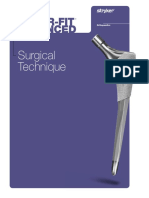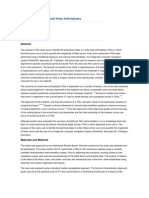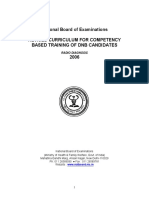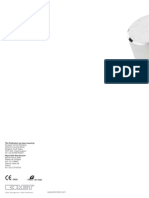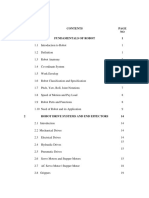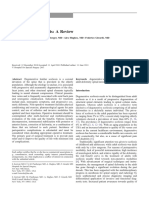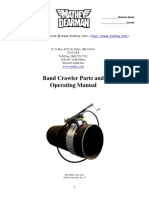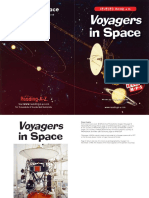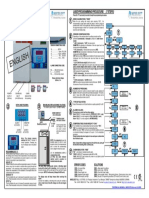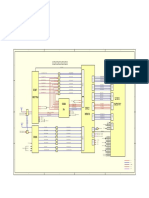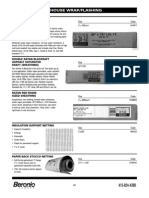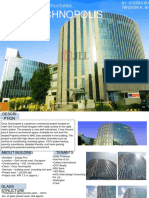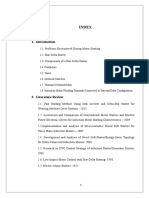Printer & its Types
1
� Printer
• Printer is an external hardware device responsible
for taking computer data and generating a hard copy
of that data.
• Printers are one of the most used peripherals on
computers and are commonly used to print text,
images, and photos.
2
�Types of Printer
Printers can be categorized into:
• Impact Printer
• Non-Impact Printer
3
�Impact Printer
• These printers have a mechanism
that touches the paper to create an
image.
• These printers work by banging a
print head containing a number of
metal pins which strike an inked
ribbon placed between the print
head and the paper.
4
�Impact Printer
• It strikes paper and ribbon together to form a character, like a typewriter.
Advantages
• Less expensive
• Can make multiple copies with multipart paper
Disadvantages
• Noisy
• Print quality lower in some types
• Poor graphics or none at all
• Slow
5
�Impact Printer
Daisy-wheel
• Similar to a ball-head typewriter, this type of printer has a plastic or
metal wheel on which the shape of each character stands out in relief.
• A hammer presses the wheel against a ribbon, which in turn makes
an ink stain in the shape of the character on the paper.
• Daisy-wheel printers produce letter-quality print but cannot print
graphics.
6
�Impact Printer
7
�Impact Printer
Dot-Matrix
• Creates characters by striking pins against an ink ribbon.
• Each pin makes a dot, and combinations of dots form characters and
illustrations.
• Its speed is usually 30 to 550 characters per second (cps).
• This is the cheapest and the most noisy printer and has a low print
quality. Dot Matrix were 1st introduced by Centronics in 1970.
8
�Impact Printer
9
�Advantages/Dis-advantages of Dot-Matrix
Printers
• Advantages:
• (1) In-expensive.
• (2) Low per page cost.
• (3) Energy efficient.
• Dis-advantages:
• (1) Noisy
• (2) Low resolution
• (3) Limited fonts flexibility
• (4) Poor quality graphics output.
10
�Non-Impact Printer
• These printers create an image on the
print medium without the use of force.
• They don’t touch the paper while creating
an image.
• Non-impact printers are much quieter than
impact printers as they don’t strike the
paper
11
�Non-Impact Printer
• It uses ink spray, toner powder or inkless
Advantages
• Quiet
• Can handle graphics and often a wider variety of fonts than impact printers
• Fast
Disadvantages
• More expensive
• Occupies a lot of space
• The cost of maintenance is high
12
�“Ink-Jet Printer”
• It is a non-impact printer
producing a high quality print.
A standard Inkjet printer has a
resolution of 300dpi. Newer
models have further improved
dpi. Inkjet printers were
introduced in the later half of
1980s and are very popular
owing to their extra-ordinary
performance.
13
�How Inkjet Printer works?
• (1) Print head having four ink
cartridges moves .
• (2) Software instructs where to apply
dots of ink, which color and what
quantity to use.
.
Color cartridge showing inkjet nozzles
14
�Advantages/ Dis-advantages
• Advantages:
• (1) High resolution output.
• (2) Energy efficient.
• (3) Many options to select.
• Dis-advantages:
• (1) Expensive.
• (2) Special paper required for higher resolution output.
• (3) Time consuming in case of graphics printing.
15
�Thermal Printer
• Thermal printers are in-
expensive printers mostly
used in fax machines. The
Thermal printers are further
classified into two types.
• (1) Electro thermal printers:
• (2) Thermal Wax printers:
A fax machine using a thermal printer
16
�“Laser Printer”
• Laser printers use very
advanced technology and
produce a high quality
output. Laser printers can
also produce high quality
graphics images.
• Resolution is 600 to
1200dpi.
17
� “Multi-function printer”
• A multi function printer abbreviated as
MFP is an all purpose device that prints,
faxes, copies and scans. A single multi
function printer can replace several
bulky devices. These printers use inkjet
technology and provide high quality
print but at slow speed.
18
�Printing Speed
The printing speed is measured in:
• cps (characters per second)
• lpm (lines per minute)
• ppm (pages per minute)
19
� “Conclusion”
• In fact computer world is incomplete without printers
in the modern age of technology. A printer is one of
the basic needs of every computer user and one can
not utilize computer resources properly in the
absence of a quality printer.
20










